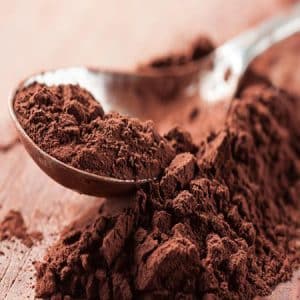Potassium carbonate is a salt compound with the chemical formula K2CO3, which is one of the best carbonates to use in the food industry because it does not change the taste of the products much.
This chemical compound can counteract the negative effects of an overly acidic diet and protect the body. Potassium carbonate can be found in many foods, including bread, jellies, juices, milk, canned vegetables, desserts, and sweets.
What does Potassium Carbonate do in Food?
One of the uses of potassium carbonate is its use as an additive in the production of some foods. As you know, additives are important compounds for the production of various foods. In fact, without these additives, it is not possible to maintain the products produced without any change in their properties and appearance. In other words, additives are used to increase the shelf life of food and prevent it from spoiling.
What Foods contain Potassium Carbonate?
Cocoa Powder:
One of the most important developments in the food industry was the discovery of a Dutch chemist named Van Houten. In his research, he concluded that if alkaline salts are added to cocoa powder, in addition to reducing its acidity, a slightly bitter and sour taste can be added to it. Potassium carbonate is introduced as the most widely used alkaline salt to create alkaline properties in cocoa has been.
 Raisins:
Raisins:
One of the important applications of this product in the food industry is to dry grapes and turn them into raisins. Potash carbonate loosens grape skins and accelerates the evaporation of water from them, so the grapes turn into raisins in less time. In addition to grapes, this substance can be used to dry other fruits.
Baking Bread:
In the past, sodium carbonate was used in baking bread. But later, due to its bitter taste, it was replaced by potassium carbonate.
Alcoholic Beverages:
To reduce the acidity of alcoholic beverages, potassium carbonate is used as a buffering agent.
Noodles:
The sale of this product to improve the texture and color of noodles is very popular. Potassium carbonate causes the noodles to stretch a lot and not break. It also raises the pH of the dough and shortens the baking time.
Is Potassium Carbonate in Food Safe?
Extensive research into the effects of additives on food products and the nearly 100-year history of the use of potassium carbonate in food has so far yielded no results have been published to prove the risk of this chemical compound for human health.
At the Food and Drug Administration, all carbonate salts are on the list of safe substances. In fact, so far no evidence has been provided on the possibility of side effects due to the use of compounds such as potassium carbonate, sodium carbonate, calcium carbonate, sodium bicarbonate, or potassium bicarbonate.
Conclusion:
Compounds such as potassium carbonate, which contains the element potassium, are very beneficial to the body and contribute to cardiovascular health and bone density. This compound is also used as a regulator of acidity and pH in the production of various foods such as cocoa, soft drinks, confectionery, sports supplements, etc.








4 Responses
Is potassium carbonate the same as baking soda?
Potassium carbonate is widely regarded as one of the best alternatives to baking soda in the food industry. This is because this compound has the same leavening capabilities as baking soda, but there is one obvious difference: it does not contain any of the sodium that baking soda contains.
Is it useful to use potassium carbonate as a food additive?
This chemical compound is known as a safe additive in food and drug organizations in Europe and the United States, and its use as an additive in the food industry has not been reported to have any adverse or destructive effects. According to the FDA recommendation, the permissible dose of this substance is 100 mg per dose, and its use in high doses in sports supplements can cause diarrhea, abdominal pain, vomiting, and nausea. The use of foods containing this substance is also not recommended for women during pregnancy and lactation.